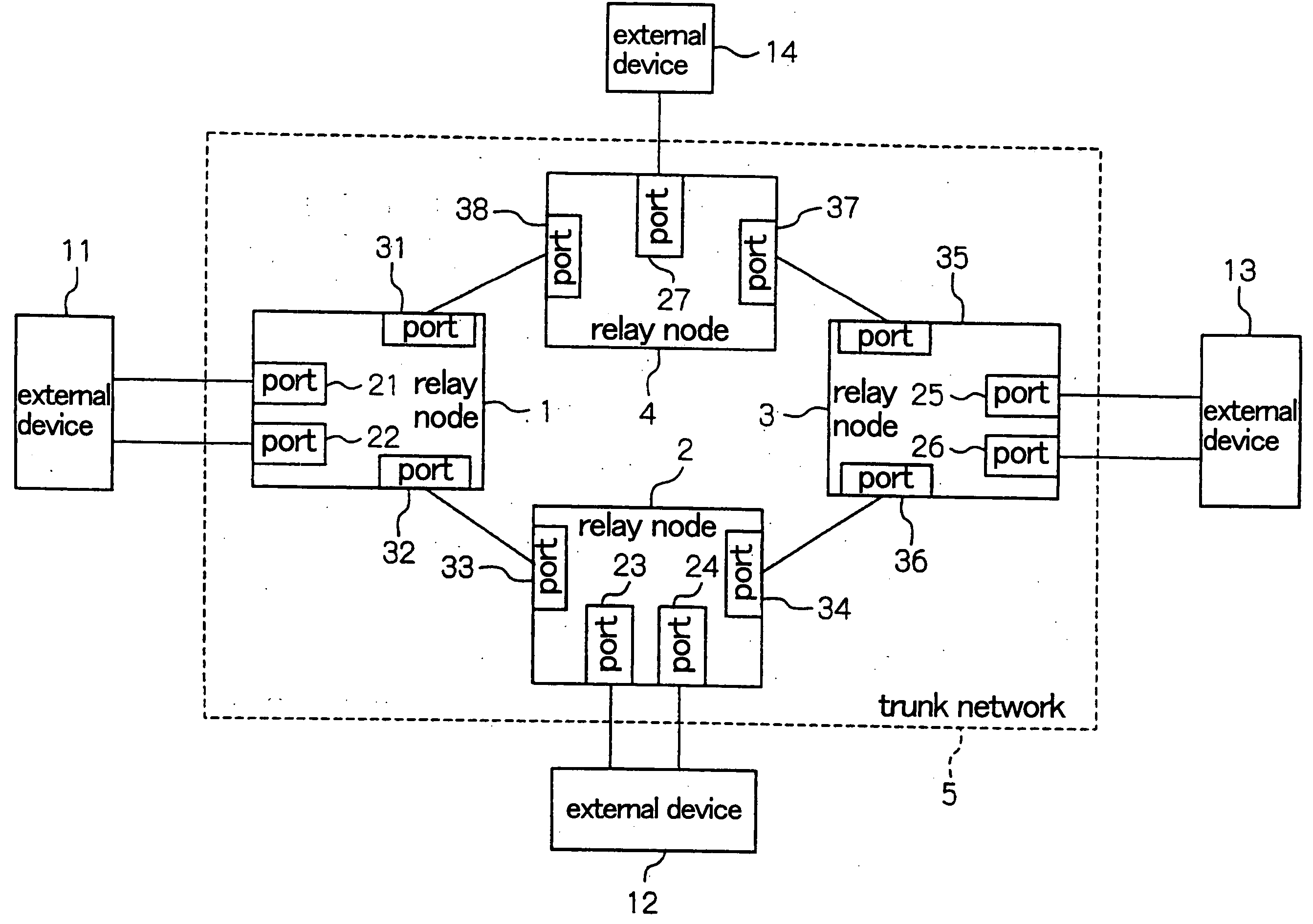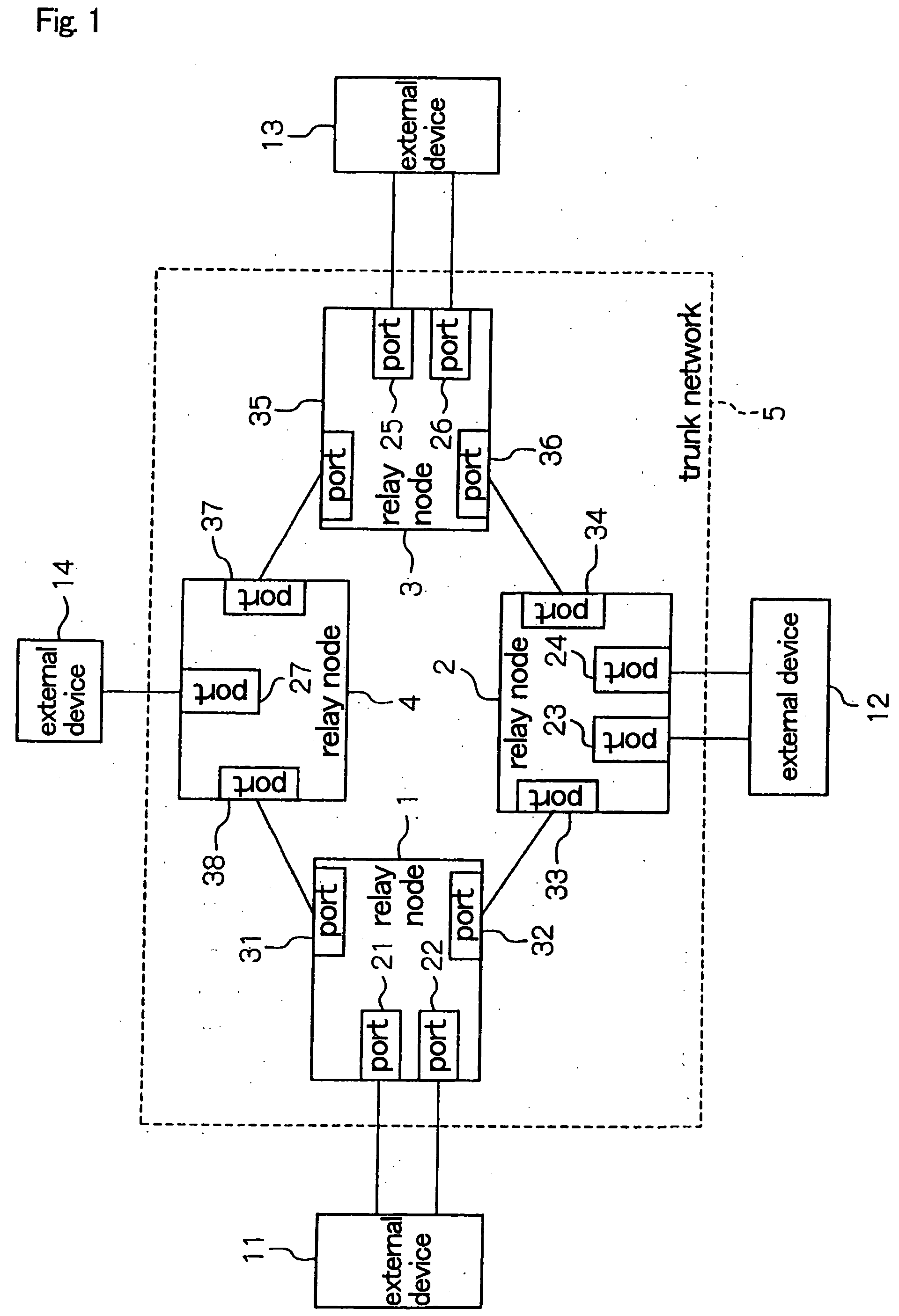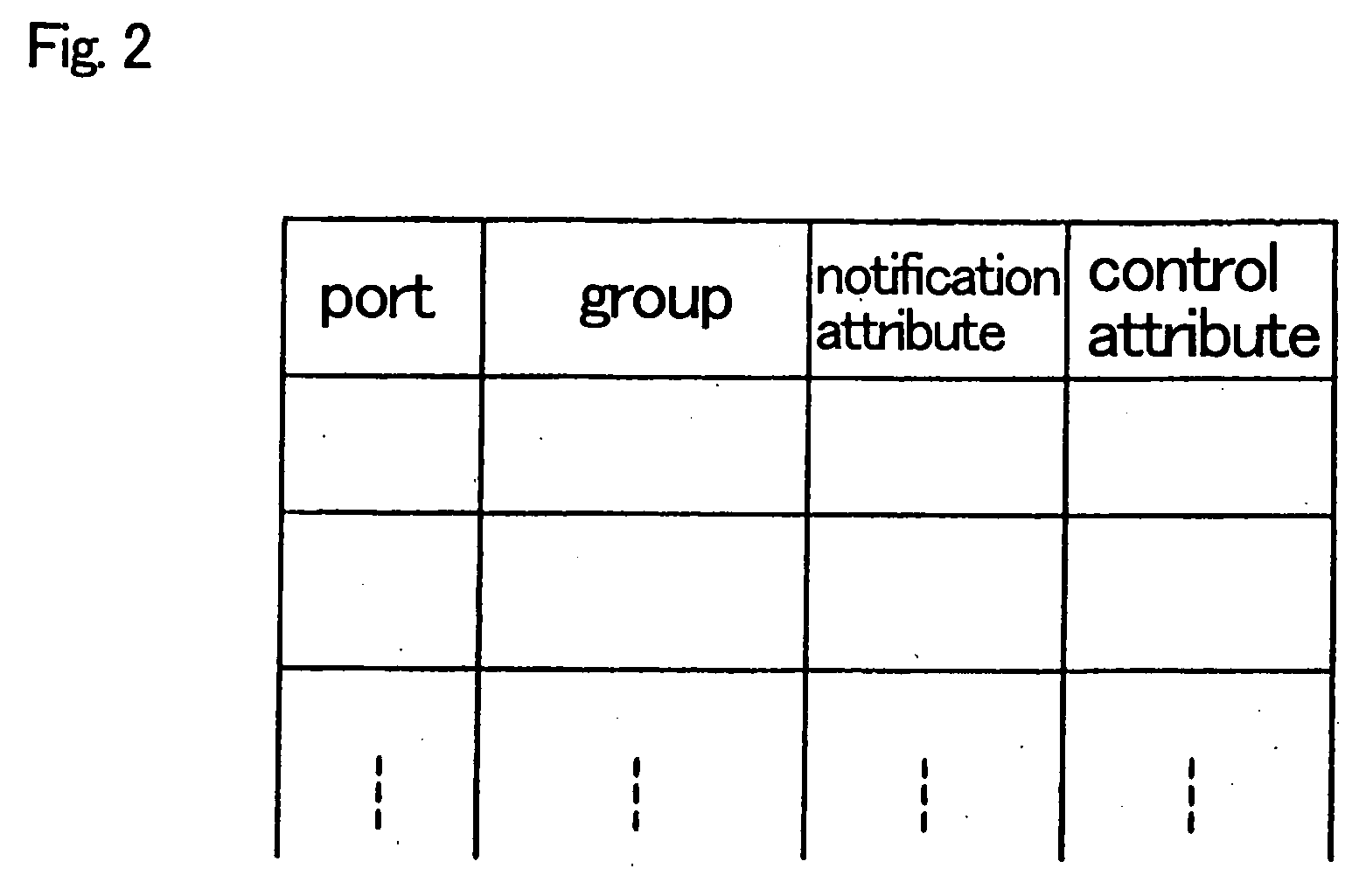Trunk network system for multipoint-to-multipoint relay
a trunk network and relay technology, applied in data switching networks, frequency-division multiplexes, instruments, etc., can solve the problems of affecting the reachability of packets that pass through the trunk network, communication is dropped, and packets are impeded
- Summary
- Abstract
- Description
- Claims
- Application Information
AI Technical Summary
Benefits of technology
Problems solved by technology
Method used
Image
Examples
first embodiment
[0041]FIG. 2 is a table showing the attributes that are set in the external connection ports of a relay node according to the Referring to FIG. 2, the group, notification attribute, and control attribute are set in each port.
[0042] The external connection ports of each relay node are classified into groups by means of the settings. The method of determining these groups is open to variation, but according to one method that can be considered, settings may be made such that groups are composed of ports that will be affected by the occurrence of a failure in any port within the group. According to another method that can be considered, ports that are included in the same set of a redundant composition may be classified in the same group.
[0043] The notification attribute is attribute information that indicates whether, when a failure occurs at that port, the failure of the group is to be notified to other relay nodes, this attribute being set to “ON” or “OFF.” The “ON” setting of fai...
second embodiment
[0094] Explanation next regards the present invention.
[0095] In the second embodiment, a configuration is shown as an ideal example in which a server and client devices (hereinbelow referred to as “clients”) are connected as external devices to relay nodes.
[0096]FIG. 11 is a block diagram showing the configuration of the trunk network according to the second embodiment. Referring to FIG. 11, trunk network 10 includes relay nodes 6-9.
[0097] Relay node 6 includes external connection port 61 and node connection ports 71 and 72. Port 61 is connected to client 17. Relay node 7 includes external connection port 62 and node connection ports 73 and 74. Port 62 is connected to client 18. Relay node 8 includes external connection ports 63 and 64 and node connection ports 75 and 76. Port 64 is connected to server 16 and port 63 is connected to client 19. Relay node 9 includes external connection port 65 and node connection ports 77 and 78. Port 65 is connected to server 15.
[0098] Port 72 of...
PUM
 Login to View More
Login to View More Abstract
Description
Claims
Application Information
 Login to View More
Login to View More - R&D
- Intellectual Property
- Life Sciences
- Materials
- Tech Scout
- Unparalleled Data Quality
- Higher Quality Content
- 60% Fewer Hallucinations
Browse by: Latest US Patents, China's latest patents, Technical Efficacy Thesaurus, Application Domain, Technology Topic, Popular Technical Reports.
© 2025 PatSnap. All rights reserved.Legal|Privacy policy|Modern Slavery Act Transparency Statement|Sitemap|About US| Contact US: help@patsnap.com



